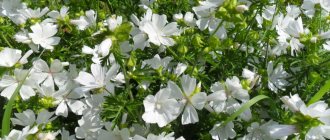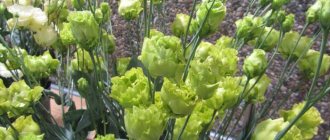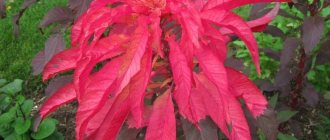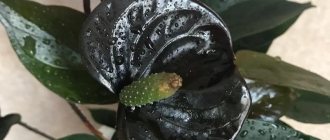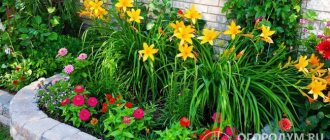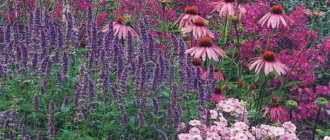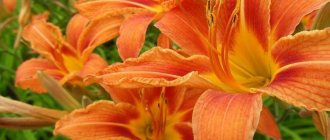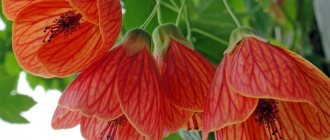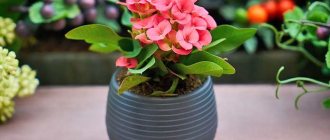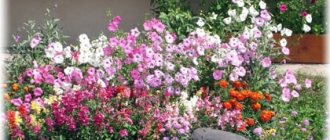Lovers of indoor flowers are gradually changing their attitude towards green interior decoration. Increasingly, original forms of perennials, unusual flowering, climbing, decorative foliage forms of plants with amazing double flowers of melange color and leaves with variegated patterns on the leaf blades are appearing in living rooms and other recreational areas in an apartment or private household. Particularly attractive are the decorative foliage forms of plants with patterns in the form of spots, lines, stripes of white, cream, and yellow colors. They illusorily increase the illumination of the room and give the home a bright, festive feel.
Hibiscus variegated, variegata. © Mahmood Al-Yousif
Popular variegated indoor plants: photos and names
I grow dozens of plants in my home.
Among them there are tall palm trees, hanging crops, herbaceous and rosette specimens. A special place among all this diversity is occupied by variegated plants. Despite the rarity of flowering, they have a decorative appearance and look unobtrusive in any room. In this article I want to share with you the most interesting types of plants with variegated leaves.
Other representatives capable of decorating any room
In addition to the decorative flowering and decorative foliage plants discussed above, there are other categories. Their most beautiful representatives look no worse, and sometimes much more interesting. Thanks to their unusual shape and color, as well as very interesting flowering, they can rightfully be considered one of the most beautiful indoor plants.
Agave
Agave is a large perennial succulent plant. More than 300 species are known, but only a few are grown indoors. Compact types that fit on the windowsill are very popular.
And for decorating large rooms, large varieties with large and brightly colored leaves are suitable.
The stem of the plant is greatly shortened. The leaves are collected in a basal rosette. Agave leaves are hard, elongated, and their ends are pointed. They have sharp spikes along the edges. The most decorative can be considered variegated varieties of agave, the leaves of which have a wide white or cream stripe along the edges.
Pomegranate
Indoor pomegranate is a fruit-bearing plant for indoor spaces, which looks great both during flowering and during the period of fruit ripening.
All varieties of indoor pomegranate are compact so that the plant can be grown without problems even in a small city apartment.
A properly formed tree, covered with small dark green leaves, looks very lush and decorative. Pomegranate blooms profusely. Bright red flowers almost completely cover the plant. After flowering ends, small red fruits are formed, which greatly enliven the tree and give it an unusual appearance.
Orchids
Orchids have long amazed us with their unusually beautiful blooms. These are mostly epiphytic plants growing on the bark of trees with an open root system. In their homeland in tropical Asia, they have adapted to a warm climate and high humidity.
The plants have a short trunk with dense, elongated leathery leaves. Orchid roots are thick and poorly branched. During the flowering period, the plant forms a peduncle on which many amazingly beautiful flowers of unusual shapes bloom. Their shades are very diverse. There are white, pink, red, burgundy, lilac and multi-colored colors.
Precious orchids
These types of orchids are not widespread due to the difficulty of keeping them. They are grown not for flowering, but for their amazingly beautiful leaves. The velvet leaf blades of precious orchids, playing in the sun, are covered with a network of veins, shimmering with a gold or silver sheen.
Jewel orchids are terrestrial plants that, unlike other members of their family, grow well in ordinary soil. But they are adapted to the humid tropical climate of Southeast Asia, so they can only be grown in a florarium.
Sedum
Sedum or sedum is considered one of the most beautiful succulent plants. There are many types of it. Among them there are upright varieties that form clumps, and hanging varieties that look good in hanging pots or flowerpots.
Sedum shoots are strong and easily branched. Their length can reach 30 cm. The leaves of this succulent are cylindrical in shape with a pointed tip. Their color may vary depending on the type of plant. There are silvery, bright green, yellowish and reddish varieties that look amazingly beautiful.
What is variegation
The botanical term “variegation” literally translated from English means “variegated, spotted.” Used for plants that have variegated leaf blades. Variegated cultures are biological chimeras that have several genotypes in their tissues.
In the tissues of the leaves and stem there are mutated cells that are unable to synthesize chlorophyll. This is what causes light or pink areas to appear. The pattern can be different, the spots form the shape of rings, are located along the veins or along the border.
Variegated plants have become popular for home growing and are valued for their decorative and unusual appearance.
Fittonia flower with variegated leaves
There is a dwarf variety of Fittonia with small leaves that is quite easy to grow in the living room. It will grow well in dry air if you occasionally spray it with water.
Flower with colorful leaves heptapleurum
HEPTAPLEURUM - fast growing tree plant
Pay attention to the photo of this plant with variegated leaves - it is similar to Schefflera, it is quite easy to grow if there is warmth in winter, good light and humid air
Hypestes flower with multi-colored leaves and its photo
HYPOESTES is grown for its spotted leaves. In good light, their color will be bright - in a shady place the foliage will become completely green. This flower with colorful leaves forms small bushes that are regularly trimmed to maintain a height of 30-60 cm. After flowering, the plant sometimes goes dormant; in this case, reduce watering until new shoots begin to grow.
Indoor flower with multi-colored arrowroot leaves
The distinctive feature of arrowroot is its impressive foliage with colored veins or spots on a background that can range in color from almost white to almost black. This indoor flower with colorful leaves rarely exceeds 20 cm in height and tends to fold and raise its leaves at night. Arrowroot is not particularly difficult to grow, but still this plant is not for beginner gardeners.
Home flower with colorful leaves peperomia
Peperomia grow slowly and are suitable for places where space is limited. The inflorescence is a thin vertical spike covered with tiny greenish flowers. There are several hanging species, but bush ones with different leaf shapes and colors are more popular. Growing peperomia is not difficult.
Indoor flowers with colorful leaves of plectranthus
Plectranthus looks more like a small, simple coleus with drooping stems. These indoor flowers with colorful leaves are not very popular, although they have many good qualities. Plectranthus can grow in dry air, it can withstand temporary dry soil, grows quickly, and will even bloom occasionally. From time to time, pinch the tips of the shoots to keep the plants bushy.
A plant with colorful leaves polyscias and its photo
The twisted stems and attractive foliage of polyscias give the plants an oriental appearance. However, they are not popular because they are expensive and easily shed their leaves if their needs are not fully met. Balfour's polyscias is the most common.
Scindapsus flower with variegated leaves
SCINDAPSUS is an easy plant to grow with leaves spotted with yellow or white. It may be called Scindapsus aureus and Golden Pothos in garden centers, but among botanists it is commonly called Epipremnum aureus.
Houseplant with variegated leaves, ragwort
Ragwort is a complex genus that includes flowering species, succulent species, and false ivies, like vines. Like true ivies, their lobed leaves and stems droop or form on a support, but their lobes are more pointed and fleshy. They grow better in dry air than true ivies.
Homemade flower with colorful Sansevieria leaves
Sansevieria three-stripe is the most popular type of houseplant with colorful leaves. This is a very stable (unpretentious) plant - vertical succulent leaves can withstand drafts, dry air, bright sun, dense shade and direct sunlight. In good conditions it bears inflorescences with fragrant small white flowers.
Schefflera flower with variegated leaves
Unfortunately, Schefflera does not bloom under room conditions. It has finger-shaped glossy leaves arranged in rays, like the spokes of an umbrella. Schefflera is not difficult to grow.
Features of variegated plants
Despite their high decorative value, variegated plants are sensitive to maintenance conditions. Features of variegated crops:
- sensitivity to any changes in external factors;
- demands on lighting conditions;
- heat-loving, low resistance to drafts;
- the need for fertilizing;
- maintaining moderately moist soil.
As the plant grows and develops, variegation can change in saturation and disappear completely. Cells get rid of non-chlorophyll areas, as they weaken metabolic processes and disrupt nutrition.
When selecting and propagating domestic crops with variegated leaves, attention is paid to preserving the decorative color, so their variegation is quite stable.
Biological feature of variegates
Variegated plants are highly decorative, but quite capricious. They require increased attention and react negatively to any even minor change in their familiar environment. This instability of variegated plants to environmental conditions is due to the presence of several genotypes in the tissues of plant cells. As a result of a genetic failure, mutations undesirable for the plant appeared in the form of chlorophyll-free cells.
Like any deviations from the genetic norm, mutant cells weaken the plant, and it requires increased attention, like any sick organism. Throughout their lives, the vast majority of mutant plants try to get rid of the “beautiful disease” and, at the first opportunity, switch to ordinary green forms. Therefore, variegated crops, in order to preserve their original genetic disease, require special care during cultivation and propagation.
Popular types
In the wild, variegation practically does not occur, since nature tries to get rid of weak individuals. Almost all flowers with variegated leaves for home cultivation were bred by humans. Let's look at 10 of the most interesting variegated plants.
Sansevieria, or Pike Tail
A popular houseplant in the Asparagus family, known for its decorative leaves that can grow over 1 m. Sansevieria is native to Africa and has been cultivated as a houseplant since the 18th century. It is an evergreen perennial with long leaves that grow from tubers.
They are painted in a dark green shade, there are light stripes in the center and along the edges of the leaf plates. Suitable for growing in the office, it is unpretentious. Sansevieria is able to absorb toxins from the environment.
Ficus benjamina
The most famous representative of the Ficus genus. It grows wild in tropical regions of Africa, preferring moist forests and the foothills of mountains. In an apartment, the plant can grow up to 1.5 m and forms strong, erect stems.
The smooth leaves grow up to 12 cm in length and are normally glossy green. Particularly popular are varieties with variegated leaf blades. The plant is demanding on humidity and light. The flower grows quickly, but you should be careful when replanting - the roots of ficus benjamina are fragile and easily damaged.
Stromanta
Perennial ornamental plant of the Marantaceae family. The flower's homeland is the tropics of South and Central America. Distinctive features of stromanta:
- height varies from 80 to 150 m;
- leaves grow up to 50 cm in length;
- depending on the type, the green leaf blades have light spots, white stripes or a red pattern on the back side;
- the plant moves in the direction of the sun, all parts of the flower are directed towards the light source. Because of this, the flower is often called “praying”.
Stromanta is a difficult plant to care for. With insufficient lighting and irregular watering schedules, decorative leaves begin to dry out and curl. To grow, you need to maintain humidity at 85-90%.
Scindapsus
A multi-species genus of the Araceae family. Found naturally in Southeast Asia. Scindapsus is a perennial vine that can grow up to several meters when grown indoors. Translated from Latin, the name of the plant means “devil’s ivy”; all parts of the plant are poisonous to humans and animals.
Forms beautiful heart-shaped leaves of variegated color. Variegation is observed only in flowers from 2 years of age; at a young age, the green color of the vegetative parts predominates. Scindapsus is not able to bloom at home, but thanks to its beautiful decorative leaves it is actively used for interior landscaping.
Hypoestes
Tropical plant of the Acanthus family. Natural habitat - humid regions of Africa, Madagascar. The height of the bush is 30-60 cm, the stems become woody and bare as they develop. Hypoestes is known for its spectacular red-green or almost white leaves; the flowers are rather modest.
Unlike other variegated crops, the flower does not require care. An important condition for growing is maintaining a high level of illumination, otherwise the leaves begin to fade and the stems become elongated.
Reproduction of variegated plants
Variegated plants are propagated by seeds, cuttings, parts of rhizomes, dividing the bush, and grafting. Seed propagation does not give the desired results, variegation is lost. If the mutation is unstable, then even when cuttings are taken, young plants can form ordinary green leaves.
To preserve variegated leaves, variegates are propagated at home vegetatively - by part of the rhizome or by cuttings with a heel. Variegated perennials grow up to 10 years. Therefore, it is best to purchase a young grafted seedling, daughter plant or cutting in the store and at home, with proper care, get an adult, bright, elegant variegated plant.
For home breeding
- Sansevieria, ferns, Cyperus, hostas, heucheras reproduce by dividing the rhizomes),
- by air layering you can obtain young variegates with maternal signs of variegation (rhododendrons, ficus, dieffenbachia, dracaena, monstera, chlorophytum),
- cuttings (Aucuba variegata, Bauhinia variegata, Peperomia variegata).
In variegated plants (especially when the light regime is disturbed), growths or “reverse” sports with green leaves appear. They need to be removed. Otherwise, they choke out variegated shoots (epyremnums, Schefflera, monstera, tradescantia, variegated sedum) and the plant becomes an ordinary green-leaved plant.
Crotons, cordyline, sansevieria and ficus
Croton (correct name codiaum)
Of course, champion. It can be very different in overall appearance. And this general appearance primarily depends on the size and shape of the leaves. I have two of them. And they are very different. I especially like that their leaves are dense and leathery.
Crotons with different leaves
Cordilina
Cordyline has this feature that worries me a little: its lower leaves gradually lose color and dry out. The upper ones grow to replace them, so the overall balance does not suffer, so to speak. But it turns out that underneath there is more and more bare trunk. Maybe this needs to be managed somehow?
Here's a cordilina
Sansevieria
Popularly known as “mother-in-law’s tongue.” Since it reproduces easily, it is somehow little valued by noble gardeners. She is usually spoken of with disdain. Well, in vain. I have seen excellent compositions when the entire window sill is filled only with these plants of different heights. And nothing else. It looks like a hedge: green and cheerful. I don't have that much space, so she's alone. But I love her.
Cissus or indoor birch
A plant with such an interesting name (photo and description provided) is widespread and deservedly respected by flower growers. Cissus got its second name - birch - thanks to its leaves, or rather, their carved shape.
The indoor vine grows well, loves rich soil and spraying with settled boiled water. The leaves of the plant are dark and glossy. Unpretentious in care, cissus fits organically into any interior. Shaded areas of the apartment are suitable for the flower. And where other crops do not grow well, cissus feels great.
Doesn't like heat. For this vine it is more preferable to live in a cool place. If the cissus feels good, it will reward you with flowers and fruits - small inedible but beautiful balls.
The liana grows quite quickly. But in the first year of life, you need to have some patience, because the growth of the root mass helps the crop to slowly increase its green mass at the initial stage. The strong shoots of the vine can be left free; a waterfall of glossy leaves will give the place in which it grows the appearance of a wild corner of nature. The shoots feel great if you wrap them around any suitable support. In this way, you can direct the branches of the plant in a way that is convenient for the gardener.
My arrowroot garden
A separate topic is arrowroot. This is a real variegated one, with a picturesque pattern. But what captivates me most about arrowroot is the following: I love watching the growth of each individual leaf. It happens like this: a tightly twisted tube appears, which over time gradually unfolds into a rather wide sheet!
Future leaf in a tube
The next day the leaf unfurls
And now the leaves are almost unfurled
My arrowroot garden
And here is the arrowroot flower
And this plant is very touchingly trying to claim to be in bloom. Sometimes tiny, inconspicuous flowers appear. They look like a small violet and look very delicate.
And tell me: do these variegated leaves deserve less admiration than the flowering ones?
Photos of indoor flowers that should not be kept at home
For some reason, many people believe that indoor plants are harmless and simply decorate their living rooms. However, there are a number of scientific reasons that claim that not all plants can be kept at home. There are also folk beliefs associated with the energy of flowers.
Some plants emit or contain dangerous allergens and toxic substances. These are some types of ferns, aglaonema, euphorbia, oleander, monstera, alocasia, some ficus, anthurium, clivia, croton, poinsettia, rhododendron, cyclamen, lilies.
If you believe in folk superstitions, then refuse to keep ivy of any kind at home - you will remain an old maid, and throw away all the cacti - your husband will become an alcohol addict. What should those who don’t have a husband do? Leave the cacti alone and let them grow. And if you want freedom and loneliness - go ahead, get the ivy!
Variegated indoor plants and changes in their color
All variegated plants belong to variant forms of flora and are formed as a result of exposure to various external factors. Essentially, variegated houseplants are the result of a genetic mutation in response to unfavorable growing conditions. Therefore, when organizing care for them, it is worth considering many factors. The significance of changes in leaf color may be decisive for subsequent correction of care and applied agricultural practices.
Variegated coloring is characteristic mainly of decorative deciduous types of indoor flowers used for decorating interiors. As practice shows, growing these plants in open ground can completely remove their variegation and at the same time the unusual color of the leaf blade will disappear.
Look at the various variegated plants in the photo, which shows the color options for the leaf plates:
Indoor rare flowering curiosities
Flower growers, lovers of growing exotic plants and surprising friends and strangers with them, always want to have rare and unusual plants in their collection. These enthusiasts never tire of looking for unusual flowers, not so common with an original appearance, without even fearing the possible difficulties of growing.
But the beautiful representatives of the plant world, which are compared to jewels, deserve to be given a little more attention when growing than other flowers that are not so whimsical.
Lachenalia aloe vera is the only flower out of 90 species that is grown as an indoor plant, decorative flowering, and has a very aesthetic appearance. The flower has wide, pleasant green leaves with speckles, tall peduncles, loose inflorescences with bell-tubes of yellow and red colors, sometimes multi-colored flowers are found. Lachenalia is especially pleasing because it blooms in the depths of winter, when there is such a shortage of bright colors.
Lachenalia aloeides
It will bloom brightly and for a long time if you place it on a frost-free loggia, where the temperature does not fall below 50 C; at temperatures above 200 C, leaves actively grow and the flowers lose their saturation.
Columnea is a magnificently flowering climbing plant, quite rarely found in houses and apartments, although the beauty of its flowers, somewhat similar to orchids, easily outshines other indoor plants.
It belongs to the epiphytes, preferring to live in trees in natural conditions; in indoor conditions it is grown as an ampelous flower. Considered capricious when caring for her:
- diffused lighting is best;
- does not tolerate lime water, only filtered or distilled water should be used;
- Stagnation of water should not be allowed;
- Systematic irrigation is necessary, especially in the heat; at low air humidity, it sheds its leaves and does not bloom.
The flower is also susceptible to attack by spider mites and whiteflies; the column needs to be periodically inspected in order to identify pests in time.
Strelitzia regal - with its bright, unusual flower shape, it resembles a bird of paradise. In order to compensate for moisture, the excess of which the root system cannot tolerate, Strelitzia is constantly sprayed with warm water. Even in winter, when watering is not needed, wipe the plant with a damp cloth.
Strelitzia reginas
Takki is a representative of perennial tropical plants, for lovers of exotics it is a valuable option for mysterious flowers, it is very rarely found on sale, it is difficult to grow from seeds, but unusual flowers with a purple tint find their fans who manage to grow such a rare color in their homes.
Takki
Colors and shapes of leaves in variegated plants (with photo)
Typically, the color of leaves on plants represents various shades of green, as well as variegated combinations of green with white and other colors. A plant leaf is called variegated, in some areas of which there is an insufficient amount of chlorophyll or no chlorophyll at all. Most often, the most interesting variegation is the result of the work of breeders, who get more and more new patterns and color combinations. The color and shape of the leaves are not interrelated. So, a long leaf can be both green and striped. The heart-shaped leaf can also have different color options.
Pink-variegated species include, for example:
Caladium
Cordyline
Cryptanthus
Hypoestes
The following species are considered red-variegated:
Bloom's Coleus (Coleus blumei, hybrids)
Irezina
Maranta
Tradescantia zebrine
White, cream or yellow variegation is present in some species:
Aglaonema
Chlorophytum sotosum
Euonymus (Eonymus)
Pisonia
The leaves of such species as:
Calathea
Stromanta
Their leaf blade shape depends on the period of plant growth.
Croton (Codiaeum) has a very special pattern in green, yellow and orange-red tones .
Many variegated leaves also differ in certain shapes and patterns:
In some, the edge of the leaf is outlined by a strip of a different color, as in Sansevieria trifasciata.
or Dracaena marginata
Other cultures have a marble pattern, for example:
Scindapsus (Epipremnum)
Hypoestes
The leaves of one type of begonia - Begonia masoniana - are decorated with a black cross.
Look at the various variegated indoor plants in the photo, which shows a variety of colors:
Change in leaf color (pale or light)
Variegated plant species often require more careful care than plants with green leaves; they always require more light, often more heat and higher humidity. A change in leaf color is always an alarming signal to the gardener that it is time to correct the care of the flowers.
Lighting is especially important for preserving the variegated color of leaves. If a plant with variegated leaves lacks light, the pattern fades and the plant “turns green” as the supply of chlorophyll, which is formed as a result of the vital process of photosynthesis, increases
The appearance of plants determines what kind of care they need.
Therefore, careful observation of the leaves is important not only to admire their beauty, but also to obtain information regarding the maintenance of plants
The basic rules are as follows:
- Plants with pale leaf color love sparse shade, i.e. they do not want to stand in dense shade, but they cannot stand the bright sun either.
- Plants with small leathery or white pubescent leaves prefer sun and plenty of light; they will love a south-facing window.
- Chlorosis is a disease caused by iron deficiency, manifested by light-colored leaves with prominent green veins.
- Light spots on the leaves appear when the water temperature for irrigation is inappropriate and when there are strong temperature changes; as well as when wetting the leaves with water in direct sunlight.
- Fungal diseases also leave their mark on the leaves: powdery mildew appears as a white powdery coating on the lower and upper sides of the leaves; gray rot - in the form of a brownish-gray coating on the upper side of the leaves.
Standard flowers with variegated leaves are very difficult to grow under normal indoor conditions—they need constant warmth and high humidity.
Flowers with colorful leaves and are more suitable for growing in a small garden. In this article, we will introduce you to the varieties of indoor plants with variegated leaves, such as Fittonia, Heptapleurum, Hypestes, Arrowroot, Peperomia, Plectranthus, Polyscias, Scindapsus and others.
You can also see photos of flowers with variegated leaves and learn about the features of caring for home flowers with multi-colored leaves.
How not to lose the variegation of indoor plants
In our homes you can often find plants with colorful leaves. All kinds of fancy patterns and designs, spots, specks, dots, borders, stripes and strokes - all this attracts our attention. It often happens that a variegated plant overshadows the beautifully flowering ones, because their flowering period is not long, and the variegated plant constantly decorates our house with its leaves. Naturally, such plants are preferred and they are the first to disappear from the shelves of flower shops.
Among the variegated ones, the well-known and familiar to us are chlorophytums, caladiums, tradescantia and begonias, ficuses, and many indoor vines (epipremnum, monstera, syngonium, scindapsus). The most popular variegated plants are crotons, coleus and royal begonias, ivies and dracaenas, dieffenbachias and cordylines. Many people are familiar with multi-colored fittonias, euonymuses and sansevierias. Some of the most spectacular and intricate variegates were representatives of the arrowroot family - stromantha, calathea, arrowroot.
When purchasing such variegated plants, you need to remember that they are more demanding and capricious compared to plants with regular colors. In addition to the general species rules, there are certain features for caring for such plants.
First of all, these are the requirements for room illumination . Variegated varieties always prefer an abundance of diffused daylight. Some of their cells are mutated and cannot participate in the process of photosynthesis in whole or in part. This mutation is not stable, and if you place such plants in partial shade, they will happily try to get rid of their “disease” and will eventually turn into their usual green form.
Plants with colored leaves grow quite slowly compared to ordinary “green” ones, so there are certain requirements for the soil . Heavy soil is not suitable for them; the soil must be light and breathable, but at the same time it must retain the required amount of moisture. An example of the composition of a suitable soil mixture could be as follows: 5-6 parts of turf soil, 2 parts of leaf humus, 2 parts of peat, 1 part of sand. The acidity of the soil should be neutral, within pH=6-7.
be fed , like all others, during the period of active growth once every 2-3 weeks with full mineral fertilizers. It is better to refrain from organic fertilizers. Particular attention should be paid to not overfeeding the plant with nitrogen, so that they do not lose their main decoration - variegation.
It happens that a completely green sprout suddenly begins to grow on a variegated variety; it must be removed without regret. Don't give your plant a chance to revert to its green leaf form.
With the help of a variegated plant, even a small one, you can advantageously emphasize and draw attention to the necessary details of the interior. You can create unique compositions by placing a variegated plant in a group with a flower blooming to match it. You can advantageously shade and emphasize variegation with a contrasting combination of colors.
By choosing variegated variegated varieties to decorate your home, you are choosing a win-win option. By following the recommendations for caring for individual species in particular and knowing the characteristics of variegated plants in general, you can create a unique flavor for your home. Saturated bright or calmer color combinations will delight you all year round.
Rules of care
Decorative foliage indoor plants require careful attention. If everything is done correctly, they will decorate the room for a long time.
Water treatments
Absolutely any plant needs water. And while in the wild many species can make do with moisture extracted from the depths, this option is unacceptable for a potted culture. It is necessary to carefully understand how drought-resistant a particular species is. The most delicate crops require extremely regular care. The slightest causeless deviations from the schedule are strictly unacceptable.
But this does not mean that you can overwater your plants. The intensity of irrigation depends on both the time of year and the actual temperature.
Important: in addition to the formal schedule, you need to take into account the actual humidity of the earth's surface. When it dries, you can water it immediately, but not before
Spraying
But we must also take into account the need to use spray guns. This procedure simulates rainfall and thereby brings the living conditions closer to the natural norm. You will definitely have to spray:
- all plants imported from tropical and subtropical regions, from the equator and from the subequatorial zone;
- all crops with fleshy leaves of a rich green tone;
- conifers (regardless of region of origin).
It should be remembered that spraying is strictly prohibited for:
- crops with thin, almost transparent leaves;
- plants with pubescent or velvety leaves;
- lacy, jagged foliage.
Attention: if the decorative foliage crop does bloom, it is advisable to cover the petals and buds for a while. Spraying these parts is strictly prohibited.
Spraying in the dark is also unacceptable, because then water will not be able to participate in the process of photosynthesis. Fine spraying of water is contraindicated for any plants. Very small droplets will simply flow down to the roots, and there will be no result from such a procedure.
If the ornamental crop is located in a place directly illuminated by the sun, it must be moved into the shade during spraying. Return the container back only after the surface of the leaves and trunk has dried. When the cold season sets in, you should not keep the sprayed plant on the windowsill.
At this moment, stable warmth is very important to him. No matter how much time it takes to work, you can’t stop: you need to get water to start dripping from the leaves
Shine of leaves
Lush, shiny foliage is a sure indicator of healthy indoor plantings. And this property does not depend on hydration alone. Of course, proper watering is very important. However, neither this nor even washing the foliage with water from a spray bottle and removing dust solves all problems. Advertising actively promotes all kinds of decorative products.
Some gardeners mindlessly grab them, without even trying to understand what kind of preparations they are using and how good the effect will be. Many decorative foliage plants do not require polishing at all. They should look perfect even without it. Polishing is required, for example, for croton, ficus, monstera, and aspidistra.
Fittonia
People who like to take care of their home garden in an apartment are probably familiar with a plant called “fittonia”. However, in Russia the indoor flower has not yet gained widespread popularity, since it appeared relatively recently.
Having a pot of pink leaves on the windowsill will definitely fill the owner with the pride of a gardener. Against the background of bright pink veins on the leaves, the flowering of the indoor plant is inconspicuous - small white flowers appear.
For Fittonia, it is necessary to create certain conditions so that the flower feels good. As a rule, this is not difficult if you follow the rules. For example, the plant must receive enough diffused and not very bright light, otherwise the brightness of the leaves will quickly disappear.
To remain active all year round, the room temperature should be at least 25 degrees. Be sure to monitor watering. If the soil is dry, the leaves will fall, but if you don’t water for a long time, the plant will wither.
Ampelous climbing plants. Lianas
Plants with long, hanging shoots are indispensable for interior decoration. The most modest in requests are the ubiquitous tradescantia, which can be either with plain or with striped silver leaves. Tradescantia is easy to propagate and makes for quite beautiful hanging baskets. To prevent the ends of the shoots from looking bare, they should be pinched more often. This plant loves moist air, and with regular spraying it will delight you with the bright green colors of its leaves.
Hoya can also be called easy to grow - wax ivy, which in late spring is decorated with small, wax-like flowers. Its shoots can easily reach a length of 4.5 m, but require special support in the form of a lattice or stretched wire. Hoya can also be grown as an ampel.
Ivy, so beloved in the last century, does not tolerate the dry air of apartments with central heating; they require coolness in winter, and constant spraying in summer, otherwise the ends of the leaves dry out and do not look aesthetically pleasing. Some types of ivy have special devices - aerial sucker roots, which allow them to climb to a sufficient height, but Canary ivy requires support.
Thunbergia, which is still not very widespread in Russia, is also interesting. This plant, with bright orange and yellow flowers, is easily grown from seeds, easily filling large areas with its stems and serrated leaves within a month. At the end of the season, the plant is simply thrown away to be grown from seed again in the spring.
Decorative foliage plants
This is the largest group of indoor plants. It unites more than one hundred and fifty types of flowers. Their main feature is beautiful, decorative leaves. They can be different shades of green, or they can have an unusual color. And green leaves are also often not monochromatic, but with stripes or spots of different shades of white, yellow, and purple.
The leaves of decorative deciduous flowers come in a variety of colors: red, purple, yellow. Some may change color depending on the time of year or lighting.
Decorative foliage is an excellent interior decoration. For example, I like these flowers more than others. Among the decorative deciduous ones there are specimens that can compete with the decorative flowering ones. After all, leaves can be of very unusual shapes: dissected, lobed, jagged, oval, linear. Jagged or wavy edges of the leaves are also one of the characteristics of these flowers.
They usually have small flowers that appear 1-2 times a year and are not particularly decorative.
It is these flowers that easily take root in almost any apartment conditions. They are not as demanding on a certain level of lighting as beautifully flowering (decorative flowering) ones. True, some specimens can change the color of the leaves depending on where they are located - in the sun or in the shade. But the flowers of this group are quite demanding regarding proper watering and air temperature. They may also lose their decorative properties due to lack of nutrients. For many, the tips of the leaves dry out and darken.
In this group, plants can also be divided into subgroups: trees, false palms, bushy plants, vines, ampelous, ground cover, flowers with spear-shaped leaves and flowers with grass-like leaves, as well as carnivorous plants.
Among the prominent representatives of decorative flowering plants: ficus, dieffenbachia, bamboo, fern, arrowroot, palm, philodendron.

